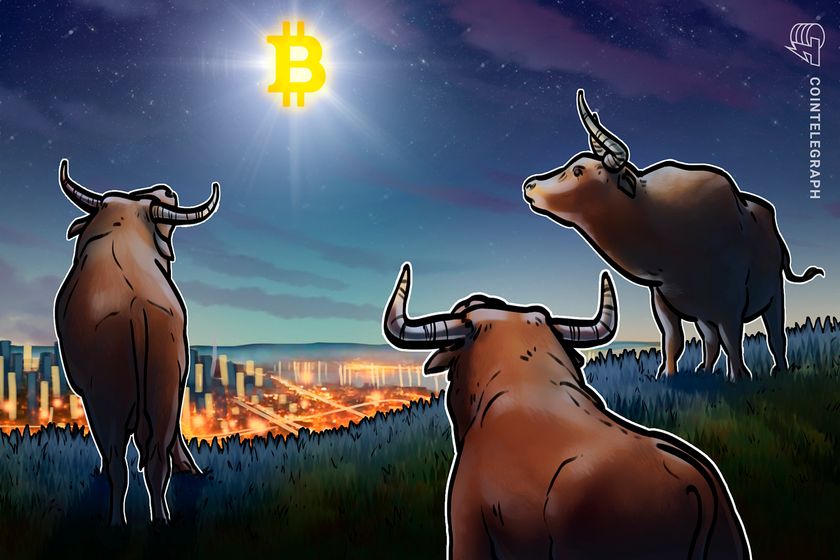Pull your sats out of Minecraft now
Back in our July edition, we announced Satlantis, an independent Minecraft server run by the game’s fans, enabled players to earn Bitcoin by completing in-game quests using play-to-earn functionalities. We noted Minecraft developer Mojang’s previous NFT ban and concluded, “Time will show how this integration fairs against the ban.”
Time has shown, as Microsoft subsidiary Mojang has asked Satlantis to remove the play-to-earn features, according to a Discord post by server founder David Dineno. The server accepted the request and removed the feature two days after the Discord post.
The Satlantis founder stood behind the play-to-earn model and expressed his annoyance with the situation, stating:
“The Game That Shares its Profits with Players’ works. And it works well. All of the time, money, and energy that we put into this game together will not be forsaken by a few dinosaurs at some conglomerate.”
Despite the setback, the Satlantis community can take solace in the fact that the team is actively exploring alternative platforms that “encourage innovation instead of stifling it.”
The community of Satlantis backed their platform and shared their disappointment in Mojang (and Microsoft, indirectly) through social media platforms:
Dineno advised players to withdraw their satoshi, emphasizing they will be diligently processed. Satlantis developers pledged to honor all in-game assets, including sats, prize pools, ASICs, players’ premium battle pass status and all other transferable data. The Minecraft server will remain operational, albeit without its play-to-earn features, as the team aims for a seamless transition to the next gaming frontier.
How can blockchain build upon eSports?
Blockchain-based online gaming hub Ultra co-CEO and co-founder Nicolas Gilot says that eSports are struggling to generate profits, and a change of direction is needed.
“In my view, it can create a better, more sustainable product for viewers and sponsors by broadening participation beyond the elite level,” he told Web3 Gamer.
Web3 gaming arguably needs a solid eSports foundation to reach the mainstream audience.
The Ultra team recently attended the major gaming conference Gamescom, where Gilot reports that interest from game developers and publishers, eSports organizations and investors was high as the video game industry seeks new ways to stay afloat during challenging times.
Blockchain can act as the glue that binds all parties together, Gilot says. Without it, smaller teams, events and sponsorships won’t be as viable.
Smart contracts can remove much of the admin burden, distribute prizes and earnings, and give confidence to publishers, brands and influencers to get involved at all levels.”
Ultra’s eSports hub, Ultra Arena, is designed to help more gamers attract sponsors earlier and move up the ranks as they grow and improve, Gilot noted. “The Ultra blockchain also helps by building a player persona across all areas — not just competitive gaming but how they buy games and digital collectibles and interact with others in-game.”
Web3 Gamer: Mainstream eSports has shiny stages and massive marketing budgets. There are commentators, pre-game shows, and physical places and streams for the fans to watch the games live. How do you compete?
Gilot: We don’t want to! We want to see players who level up through Ultra Arena take the stage at those massive LAN events, which will be a proud moment for all of us.
What we do want is to feed into those experiences, helping grow the existing scene by opening it up to many more players, brands and publishers. For teams and brands, Ultra Arena will nurture more esports fans and provide more ways to activate fans pre and post-event with the help of blockchain technology. This could be unlocking access to an exclusive in-game digital collectible through attending the event itself or sponsor-branded skin being airdropped to you for watching on Twitch. Extending fan engagement will ultimately add value for all key stakeholders and support the journey to sustainable profitability.
Read also
Features
How to protect your crypto in a volatile market: Bitcoin OGs and experts weigh in
Features
Why Virtual Reality Needs Blockchain: Economics, Permanence and Scarcity
Web 3 Gamer: Is there enough traction and interest on Web3 for a competitive stage that can make mainstream players willing to spend money?
For us, it’s not about how to make esports out of Web3 games, it’s more about how Web3 technology can be used to improve the existing esports model. It’s the game, not the tech, that should be front and center.
The current eSports model is probably overly reliant on sponsorship and advertising. To improve it, there needs to be a focus on cross-industry value creation, directly involving publishers, brands, esports teams and competitive players. Within Ultra Arena, we want to drive mutual growth by opening up the existing model to many more stakeholders, with grassroots competitive players turning pro, smaller brands gaining traction and startup teams becoming massive eSports powerhouses.
Apple iPhone 15: What does it offer for Web3 gaming?
When technology companies run out of innovation juice, the first instinct is to hop on the gaming train. Apple made no exception when it unveiled the brand-new iPhone 15 and iPhone 15 Pro. The devices are pretty much the same as their 14th-generation counterparts, with an A17 Pro chip, the usual camera enhancements and a coat of new paint … but there is one significant difference.

The iPhone 15 Pro can run demanding game titles such as Resident Evil 4 (2023), Resident Evil Village, Death Stranding and the soon-to-come Assassin’s Creed Mirage natively, meaning the games run directly on the device’s system without any external layers.
The new pro model features hardware-accelerated ray tracing, which enables games to present dynamic lighting effects. Thanks to Apple’s scaling solution MetalFX, the iPhone 15 Pro can offer better graphics with little performance loss.
The new smartphone, which will act as a handheld gaming device, will be able to display games on 4K monitors through upscaling and support third-party gamepads such as PlayStation’s DualSense controller, which is already being sold at Apple Stores. The possibilities are endless with the addition of Apple’s upcoming VR headset.
Read also
Features
Gen Z and the NFT: Redefining Ownership for Digital Natives
Features
China’s Digital Yuan Is an Economic Cyberweapon, and the US Is Disarming
All in all, it’s clear that the newly introduced Apple iPhone 15 Pro line will become a gaming powerhouse more than anything. The real question is how Web3 game developers can benefit from such advantages.
Developers can utilize the mighty system of the device to make mobile games with better graphics and more comprehensive gameplay. Web3 games on PC will also be easier to port over as features and graphics won’t have to be excised for better performance on mobile platforms.
Hardware is one thing, but economics is another. Currently, Apple has stringent rules for NFT apps that practically force users to go through in-app purchases subject to Apple’s 30% commission, while apps are not permitted to support crypto payments.
It’ll be interesting to see what Web3 gaming companies come up with on the new monster iPhone. The tools are there for developers to leverage; let’s hope they fully utilize them to give us great Web3 experiences.
Oh, I nearly forgot the most revolutionary addition: The models come with USB-C.
Formula’s second swing in Web3
Formula’s first attempt at Web3 gaming didn’t work out as F1 Delta Time, a pioneering racing game and one of the first licensed titles utilizing NFTs and crypto technology, ceased operations in March 2022. After warming up in the formation lap with its first Web3 game, Formula is ready to return to the blockchain circuits with Formula E: High Voltage.

Developed by Animoca Brands, the new Formula game focuses on Formula E, a motorsport championship with fully electric-powered race cars, instead of Formula 1’s models. Players are put in the shoes of a team principal responsible for their Formula E team’s strategic decisions and management with the ambition to become champions.
Various factors will determine your team’s performance, such as racetrack distance, difficulty, weather and temperature. Official Formula E racetracks in Berlin, New York, Rome, London, Jakarta, Seoul, Cape Town and Diriyah will be included, with more to be added later.
Race cars and drivers are available as nonfungible tokens, with each driver possessing distinctive abilities from a pool of over 200 unique skills.
Formula E: High Voltage is available on early access until Oct. 2. Will Formula E: High Voltage take pole position among Web3 racing games? We’ll have to wait and see.
Gods Unchained Launches New Mode
The free-to-play Web3 trading card game Gods Unchained has launched a new permanent game mode called Sealed Mode, where players will build a deck from a randomized pool of cards to triumph over each other. The idea is similar to that of FIFA Ultimate Team’s Draft mode.
Common card games are played with two players who have their own decks of cards that represent creatures and spells. Players take turns to strategically deploy their cards using resources. In order to win, players must reduce their opponent’s health to zero while protecting their own.
Sealed Mode begins as players pick one of the three Gods that represent the players, just like Heroes from Hearthstone. Once players pick their Gods, they receive a randomized pool of 60 cards. The goal is to craft a deck with at least 30 cards from these 60 while trying to combine cards that work well together to defeat other players.

Once players finalize their decks, they take on other players in a series of games until they win seven times or lose three times. Winning more games earns players better rewards, like cards and cool cosmetic items. The rewards get better the more they win.

The card collection in Sealed Mode includes cards from past Gods Unchained sets, including Welcome, Core, Genesis, Etherbots, Mortal Judgement, Winter Wanderlands and Band of the Wolf. Players who wish to play Sealed Mode are required to pay a fee of 15 GODS tokens, worth roughly $2.5.
More from Web3 gaming space:
– PUBG developer Krafton introduces its upcoming metaverse project Overdare, previously known as Project Migaloo.
— Leaked internal documents from May 2022 show that Microsoft’s Xbox roadmap included support for crypto wallets.
– South Korean gaming conglomerate NHN Corporation ventures into the Web3 space in a partnership with Mysten Labs’ Layer 1 blockchain, Sui.
– Proof of Play, an NFT gaming studio founded by the co-creators of FarmVille, completes a seed funding round with $33 million in investment.
– Free-to-play battle royale game My Pet Hooligan launches in early access on the Epic Games Store.
– My Pet Hooligan developer AMGI Studios signs a 12-month deal with Amazon Prime Gaming.
– Star Atlas launches browser-based gaming metaverse SAGE Labs.
– Aavegotchi announces its Gotchi-themed game center.
Subscribe
The most engaging reads in blockchain. Delivered once a
week.























Discussion about this post